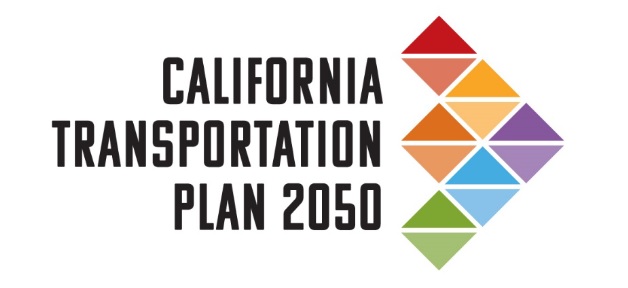ITSdigest
Caltrans introduced The California Transportation Plan (CTP) 2050, which details the state's long-range transportation vision and establishes a roadmap to improve mobility and accessibility in the state while reducing greenhouse gas (GHG) emissions related to transportation.
"California’s transportation system connects 40 million residents to jobs, housing, vital services and recreation. The plan sets a bold vision to foster economic vitality, protect our environment and meet the transportation needs of all Californians," said Toks Omishakin, Caltrans Director.

The CTP 2050 is a comprehensive plan to meet several key objectives, including:
■ Expanding economic opportunities through the easy, integrated movement of people, freight and services.
■ Creating a low-carbon transportation system that protects public and environmental health.
■ Advancing transportation equity and improving quality of life for Californians.
■ Responding to current and emerging trends and challenges, including demographic and economic shifts, land use changes, and other factors.
■ Enhancing safety and security on bridges, highways, and roads.
■ Fostering healthy lifestyles through walking and bicycling paths.
■ Harnessing potential changes in travel behavior, such as increased use of autonomous vehicles, shared mobility services and the effects of increased telework, telehealth and distance learning, to reduce our reliance on driving.
■ Supporting sustainable growth and affordable housing.
Transportation Priorities
By 2050, California’s transportation system will need to support an estimated 45 million residents with an integrated, sustainable network of mobility options that provide safe, convenient and reliable access to jobs, education, health care and other services that improve quality of life in all areas of the state. California must do this while also achieving its goal of reducing GHG emissions from transportation to 80 percent below 1990 emissions levels by 2050. To make this a reality, Caltrans and local transportation agencies identified 8 priorities in the CTP 2050, all of which can be supported by Intelligent Transportation Systems (ITS):
■ Safety – Provide a safe and secure system designed to eliminate transportation-related fatalities and serious injuries and withstand natural disasters.
■ Climate – Achieve statewide GHG emission reduction targets and make the state’s transportation system more resilient to climate change.
■ Equity – Eliminate transportation barriers and expand access across all communities, particularly in low-income neighborhoods and communities of color and for people with disabilities.
■ Accessibility – Improve mobility across all modes of transportation, including transit, walking, biking and vehicle travel so all Californians can safely and easily reach their destination.
■ Quality of Life and Public Health – Enable vibrant, healthy communities through expanded walking and bicycling paths and convenient transit options to reduce GHG emissions and dependence on driving.
■ Economy – Support a vibrant, resilient economy by improving freight movement and access to housing and jobs.
■ Environment – Reduce the negative impacts of transportation by expanding low-carbon and sustainable mobility options.
■ Infrastructure – Maintain a reliable transportation system that is sustainable and resilient to climate change and natural disasters.
The CTP 2050 seeks to advance racial and economic justice by redirecting resources to marginalized and underinvested communities and amplifying voices that have been historically excluded from the transportation decision-making process. The plan emphasizes the importance of engagement and careful planning to ensure all Californians enjoy the benefits of transportation projects and are not subject to negative project impacts, particularly in historically underserved and underrepresented communities, such as Black and Latino neighborhoods. Improving engagement in transportation planning at the neighborhood level will limit those communities’ exposure to pollution from the transportation system, provide expanded mobility options, and enhance access to jobs, education, healthy food and transit.
Opportunities for ITS
The broad vision of CTP 2050 provides many exciting opportunities for the ITS industry, highlighted in the plan:
■ ITS can support deployment of connected and autonomous vehicles (CAV), leading to more efficient use of the roadway system. CAVs could offer congestion relief, optimization of roadway capacity, less demand for parking, and improved safety by eliminating human errors in driving.
■ New tools and technologies can advance modeling, simulation, and data collection and monitoring tools can help manage multimodal assets more efficiently.
■ Data and information technology are enabling shared mobility platforms such as bike-share, car-share, and e-scooters, enabling integrated transit fare payment, and providing real-time traveler information.
■ Transit ITS, such as transit signal priority, automatic passenger counters, and real-time traveler information systems can make transit a more efficient and reliable option.
■ Autonomous trucks and platooning could significantly improve freight operations and capacity by reducing variability in errors, increasing safety, and decreasing travel times and fuel usage.
■ Freight ITS could improve the reliability of goods movement on California roads.
The plan also calls for expanded research on the impacts of CAVs, as well as proactive policy interventions to ensure they support long-term goals of safety, equity, and accessibility. The plan outlines 6 goals with respect to CAVs.
1. Ensure CAVs are shared, electric, support efficient land use, and are aligned with the automated vehicle key principles for healthy and sustainable communities.
2. Pursue policies that expand CAV access to aging and youth populations, underserved communities, unbanked and low-income users, and users with disabilities.
3. Ensure that a robust communications network is simultaneously being developed statewide to prepare for the demands of future CAV application technologies.
4. Explore the benefits and tradeoffs of adopting CAV for essential vehicle fleets.
5. Expand research to better understand impacts of CAVs on personal mobility, freight mobility, transportation system performance, land use, and emergency response.
6. Expand cross-agency coordination and collaboration at the state, regional, and local level, as well as with neighboring States to ensure smooth operation and deployment of CAV technologies.




